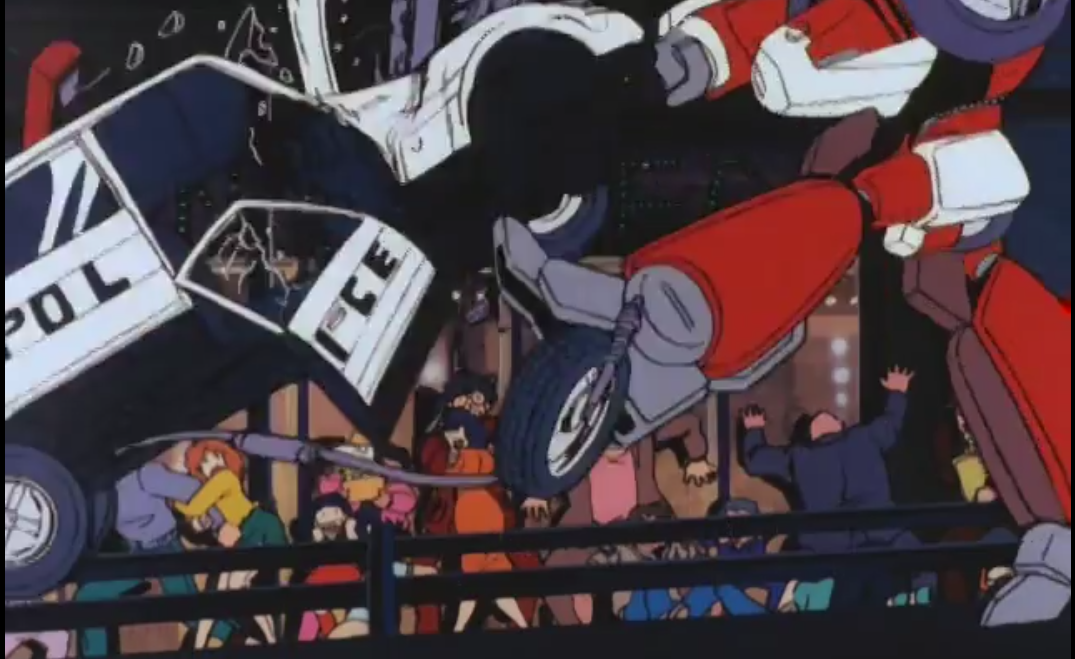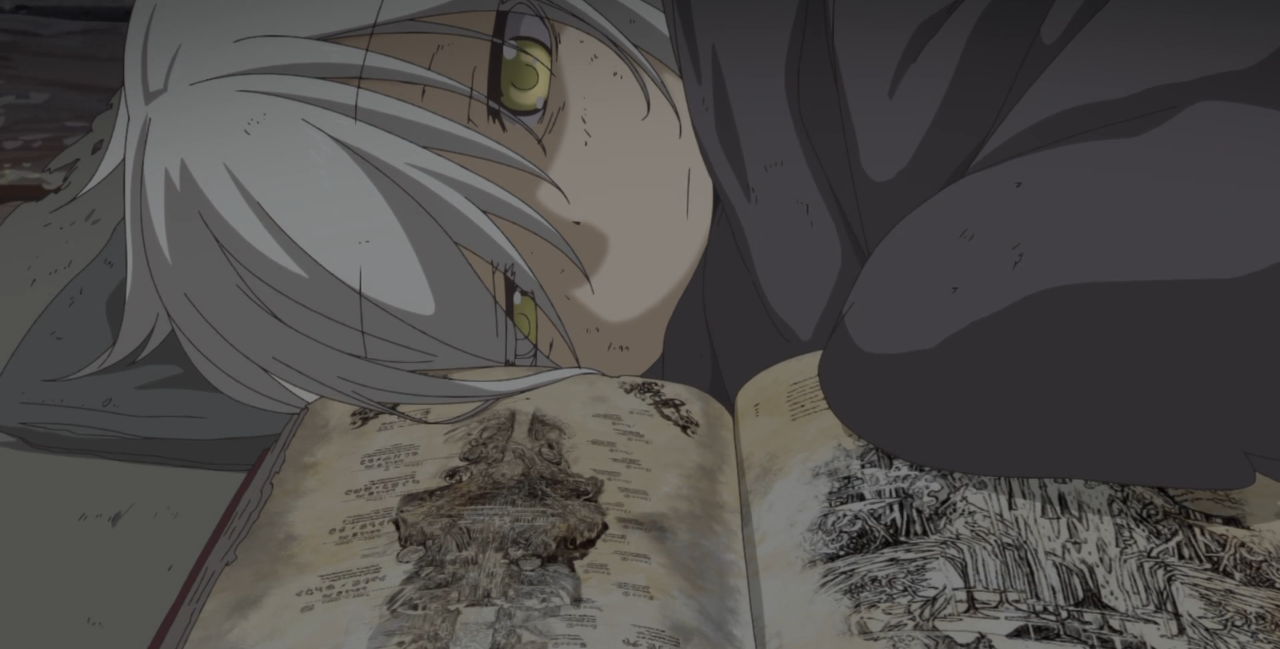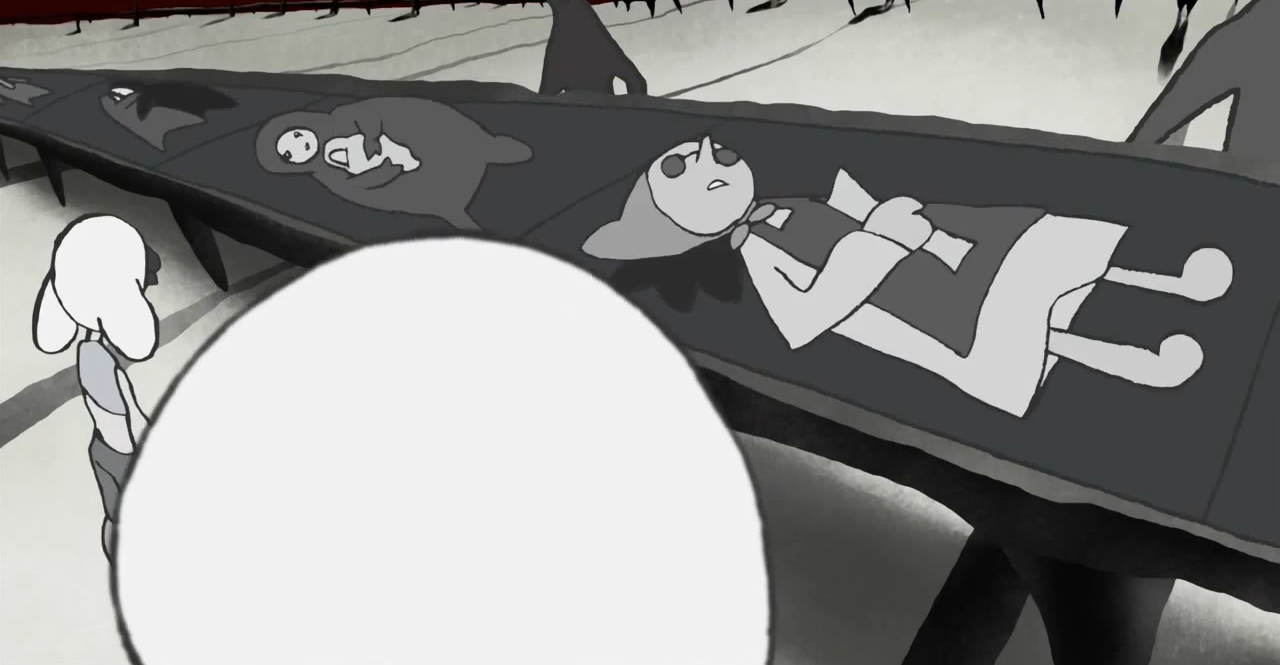1. Giant Robo (ジャイアントロボ THE ANIMATION 地球が静止する日) has the most amazing cast of heroes and villains ever in a anime, even more so in a relatively small spam; the fights between the magnificent 10 and the experts of justice are filled with magnificently animated marvelous powers (better than those of Hunter x Hunter, and rivaling Ninja Scroll). The robots’ fights are gorgeous in their “retrospection”: as they should be – slow, clumsy. However, the series convolutes its history too much (just imagine what would have happened if Von Vogler obtained a fast victory…); it also focuses heavily on the least interesting three characters: the good boy, professor crybaby and the naive damsel. The result: shounen boys want more of the perfect combats and less of the regretful tears.
2. Garzey’s Wing (バイストン・ウェル物語 ガーゼィの翼) is considered by some the worst anime ever (if we exclude from the contest the absolutely awful Yoshiteru Satou’s ouvre, which would win by far). But that is only due to their lack of sensibility: the short series manages to pass to the other side – it’s the apex example of “so bad it is (actually very) good”. It is not a masterpiece, notwithstanding: the pace should be a bit more frantic, the “alien studying humanity” approach more consistently applied in every scene. Even though, its a matter of degree and there is a good probability that those things cannot be made consciously (because if so, a tone of parody would surface, as in Ninja Slayer the Animation).
3. Both Kaiba カイバ and Devilman Crybaby, by Masaaki Yuasa start with all their odd splendor: the first showing the atrocities of social inequality, heightened by a style reminiscent of Osamu Tezuka, simple and rounded; the second, a Battalian invasion of erogenous demonic forces, neon lighted. Both however, change tone after their middle points, making things much less interesting: Kaiba builts its final arch as an apocalypse, leaving the episodic nature behind and sacrificing the strange sorrow and hopelessness that arrive from the shallowness of its characters and situations; it then tries to develop some depth where none should be possible. In Devilman, the (bad) angelic forces (i.e., satanic) absorbs the demonic, retuning the death drives from the erotic to the agonistic and then organizing them, from the messy disordered impulses of sex to the disciplined actions (even if first passing through the insanity and psychotic nature) of war. So much so that God thus intervenes (God, the impatient one, he who only moves when things are decaying “too slowly”).
4. Girls und Panzer der Film (ガールズ&パンツァー 劇場版) is something which supposedly doesn’t deserve to be truly awesome, though the more I think about it, the closer it gets to being so. First, Girls und Panzer (the franchise as a whole) conjoins two macho-otaku’s passions: specific weaponry (II GM tanks) and cute girls doing cute things. In the database world of anime creation, that is bizarre, but ok. It is indeed one of the possible combinations, and it speaks about both the public and the creative procedures employed. Then make tanks cute again: taboo-crush the world by blatantly praising the (nazi) german army, blitzkrieg etc. To set things up, organize it as an unimportant clash of schools during a sports tournament, and apply fordesque clichéd characterizations to the gigantic cast to make memorization possible. So that each school reflects a stereotyped country (the Italians being pasta eating fascist idiots, for example). So that each main girl from each school has a stereotyped personality and design/clothing to make easier recognizing her. Then, of course, choose a genius dropout as the main character and work their 4 friends as muddled, disheveled but also as girls with lots of potential, just as their’s school. Separate each school group of 3 to 6 girls in stereotyped groups pertaining to different school-club occupations. To all that apply an “overcoming the odds” history… But then the movie, ah… As if it was not enough, the movie inserts “Boko the bear” – the bear that always looses no matter what. This strange fellow loses because it’s weak, but is always struggling and requiring support by others to continue fighting. So that the script ambiguously mocks Japanese kaizen, and the whole “overcoming the odds” thing, so common in sport movies, thus heightening even more its dose of kawaii cynicism. See: it’s necessary to make your best each day, to better oneself bit by bit; to feel that each day is a failed attempt to overcome the odds, while arriving at its end at the hope of a winning tomorrow.
5. Is it possible to decrease even more the narrative in both Ninja Scrool (獣兵衛忍風帖) and Vampire Hunter D (バンパイアハンターD)? Do we want more screening time of gorgeous art and brutal fights, total superfight porn? Yes, but it is not as it is with Giant Robo; here the need is similar to that of the Transformers movies, where there shouldn’t be story at all, just action. Not that the director, Yoshiaki Kawajiri, doesn’t know it: he does reduce things to basics and disregard romance, making the hero not that interested (just as it is in Kurt Russell’s movies). So he allows less opportunities for interruptions . But here and there, there are decreases of pacing, and unnecessary blather.




